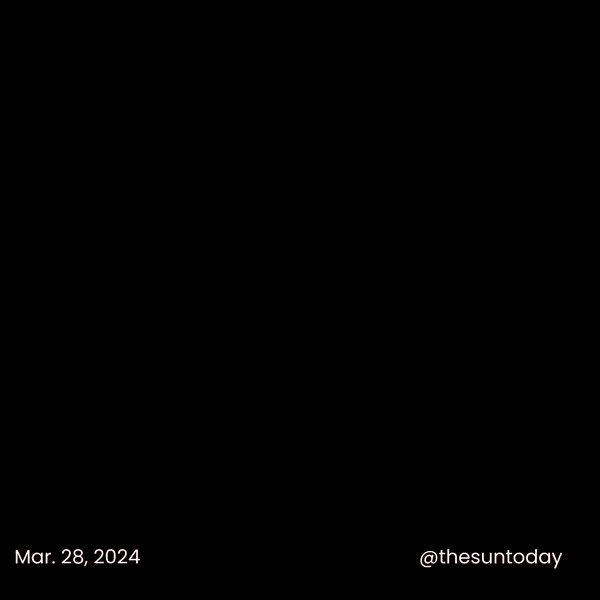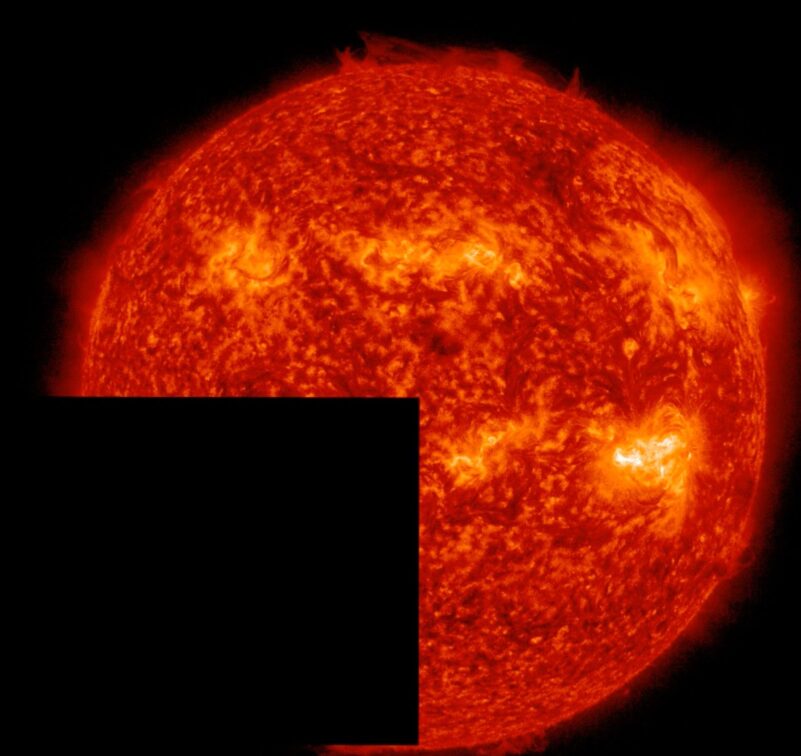
Why is this sun spacecraft image blinking?
Have you ever visited EarthSky’s daily sun news post? It’s a lot of fun. It changes each day as activity on our local star waxes and wanes (and is especially fun this year because we’re at or near the peak of the sun’s 11-year cycle). And we often include a video presenting spacecraft images of that day’s sun. But sometimes – as in the image at top – we encounter sun images made by spacecraft that appear to blink on and off or go dark in places. What the heck? Why are they blinking?
Join us keeping these daily updates on the night sky going. Donate now! We need you.
A blinking sun
The image at top was near the end of our sun news video for March 28. It’s pretty noticeable on that video, because we used the same sun image a couple of times in a row. You can also see it in the image at the top. See how it briefly flashes to black a couple of times? We asked our resident sun expert – heliophysicist C. Alex Young of NASA Goddard Spaceflight Center in Baltimore, Maryland – a member of EarthSky’s sun team and co-author of each day’s sun post – to explain. He said:
The data come down from the spacecraft in a stream that is then processed in predefined chunks. Afterward, the data are converted into images. The data streams are segments of an image. They correspond to blocks within the image. Sometimes part of a stream gets corrupted, so that, initially, when a block is converted, it comes back as blank (or black). Part of the reason the data come back in blocks is to minimize this effect. Usually, any blanks are corrected for by the time the final data are processed.
But some images are the first initial fast processing, to get the data quickly. So you might see some quick blinks to black images, within a sun animation, for that reason.
Below is an individual image from the sequence in the March 28 prominence image, cropped to focus on the prominence. So, you can see here that crop contained the one bad block, which is black.
So that’s the reason!

More from Alex
Besides working at Goddard Spaceflight Center, and co-writing EarthSky’s daily sun post, Alex and his wife Linda run a website called TheSunToday.org. Here’s more from Alex on the corruption you might see in images from sun-observing spacecraft:
Sometimes you will see these in the Large Angle and Spectrometric Coronagraph Experiment (LASCO) images on the SOHO spacecraft. I learned about this because I worked for SOHO. Back then, my job was to rewrite some of the code that processed Extreme Ultraviolet Imaging Telescope (EIT) images from one operating system to another.
EIT is one of the precursors to SDO’s AIA instrument. AIA stands for Atmospheric Imaging Assembly. It’s actually four telescopes designed to photograph the sun’s surface and atmosphere. And it was SDO AIA that created the image above.
Thanks for your knowledge, Alex!
Bottom line: Sometimes, we see a sun spacecraft image that seems to blink on and off. This happens when a spacecraft sends back a data stream where some of the data are corrupted.











